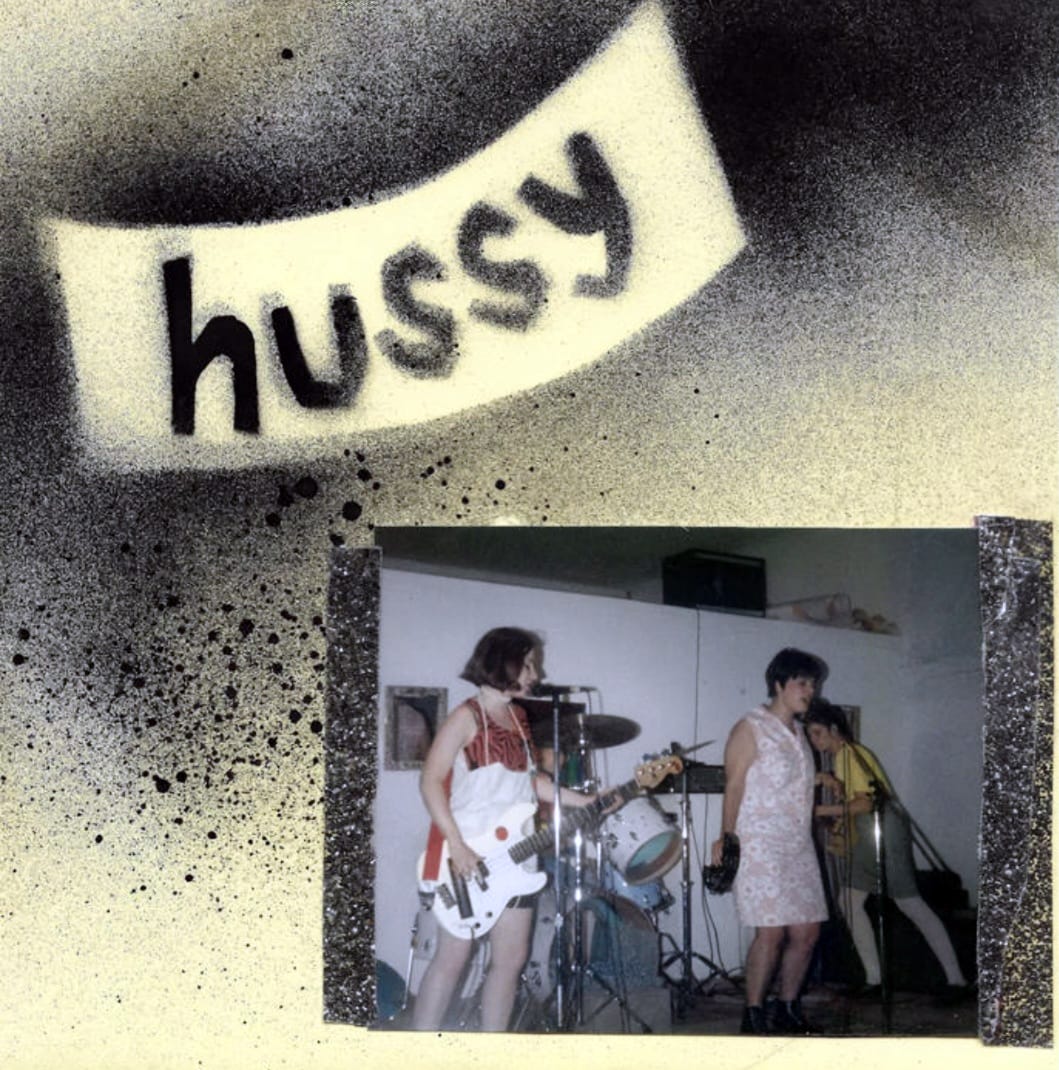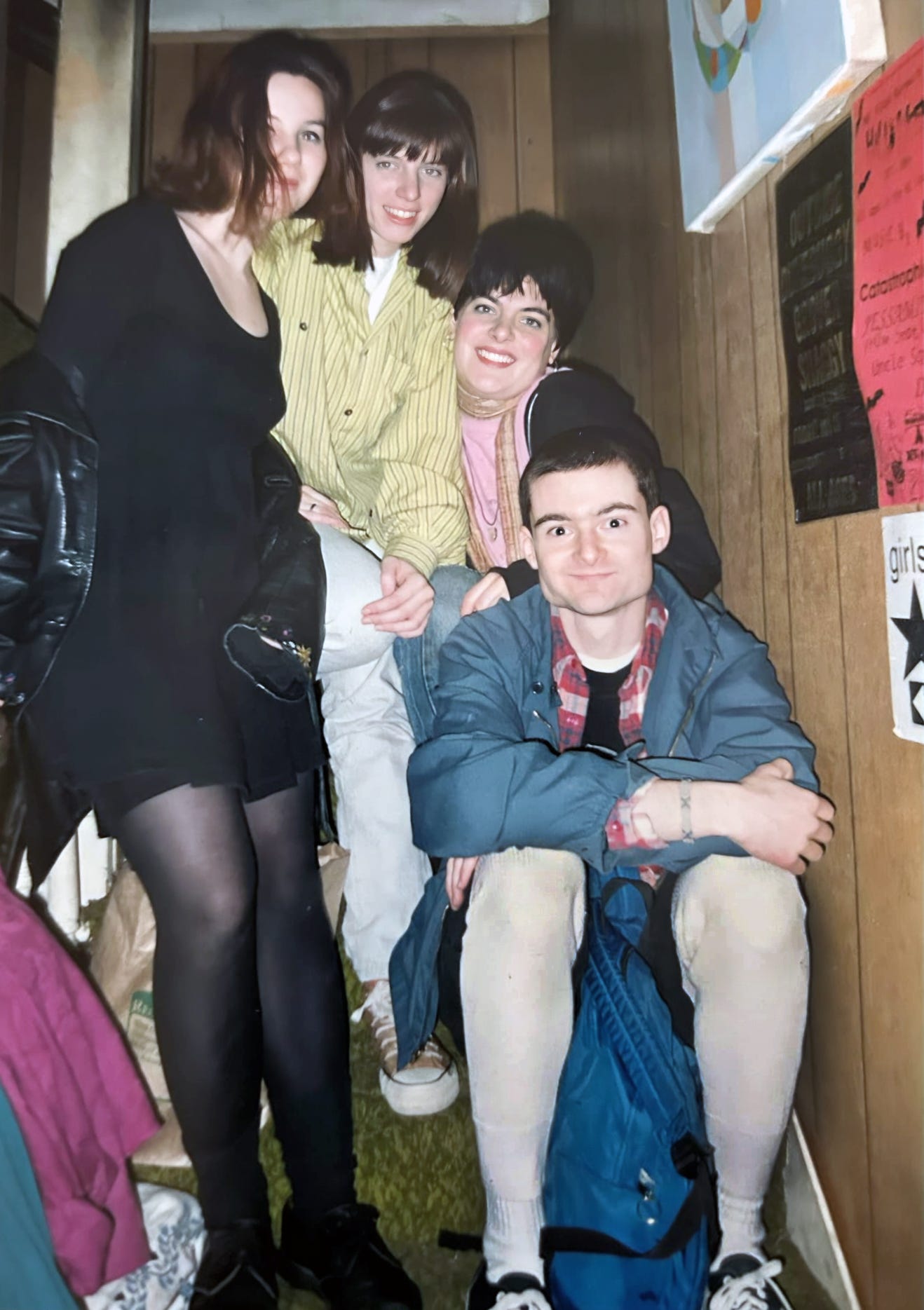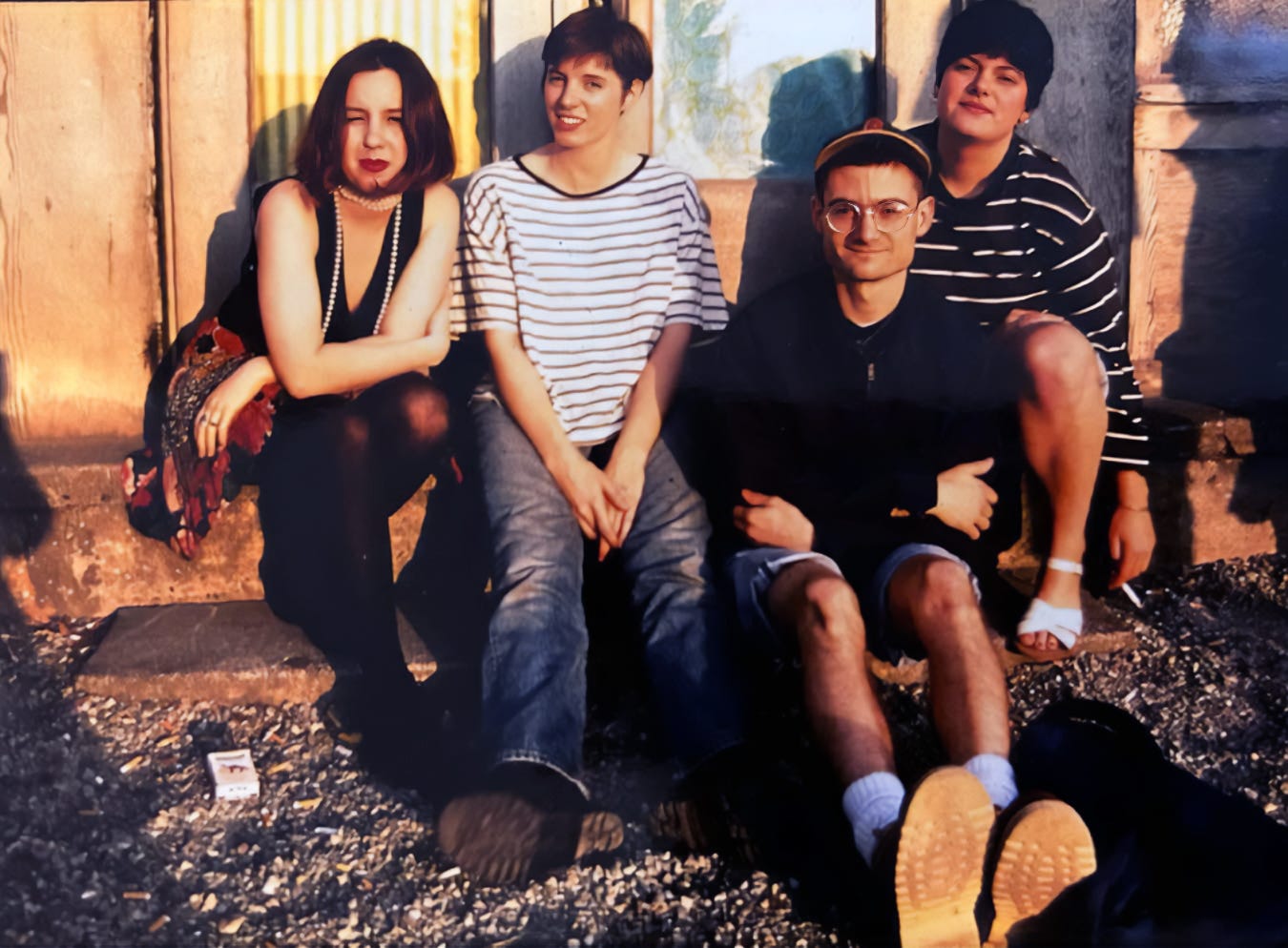Music: 'Hussy' – This is Their Story
The sound of music, the land of DIY aesthetics, encapsulated by a short-lived group with the cheeky moniker
In a time and age where we continually pick and choose which songs to hear, it’s refreshing to see aspects of a long-ago time can still hold sway stitched together with love, determination and a smattering of youthful innocence.
I never knew the band Hussy, nor any of its members, even as I was firmly entrenched in the grunge/alternative music scene some 3,000 miles away in Boston. But something magical transpired during that brief moment when everyone just ‘got it.’ We all championed the same sound, the same lifestyle, pre-internet, pre-smartphone. And I think back, how did that happen?
Hussy, circa 1993.
It doesn’t take long to see and hear why. The recently released 8-tracklist from the 4-piece band – Connie Jones, Mya Miller, Christine Feldman-Barrett, and Ken Hagel – synthesizes all that held us together musically: the post-punk DIY enthusiasm, mixed with pop sensibilities and a bit of underlying rebellion that found charm, not only in the band’s name but in tunes like “Steel Trap” and “Pretty Boy” with the latter’s repetitive chant of the track’s name taking on a sneer-bop that with hindsight, Sleater-Kinney could have easily covered.
Hussy was among the bands that had the opportunity to be involved in the heaven-sent Bellingham/Olympia community and was fortunate enough to have an EP released in 1993 and be included on a later compilation, both from Bellingham record label Gritty Kitty.
It’s not cliché to note that groups in that area were short-lived, including many I witnessed in Boston. But as Hussy was disbanding, a lovely footnote happened in October 1993 when an acquaintance handed over the song “Hey Bob” to British DJ John Peel, who promptly played it on his radio show.
Hussy outside the Show Off Gallery in Bellingham, summer 1993.
The college town aesthetics, the prominent rise of alternative-playlist radio, and the support of indie journalists were among the factors that helped the community lift the consciousness of these bands during that crucial, heady period. Thirty-odd years on, listeners are fortunate to have the Hussy experience available now, and to conclude, no one can turn a descriptor better than Hussy’s Feldman-Barrett on why it all still matters:
“Olympia and Bellingham produced their own rays of musical luminescence. It is a history of neighbouring scenes asserting their uniqueness that is worthy of remembrance.”
Hussy’s self-titled release is available through Tim Alborn’s Harriet Records on Bandcamp via digital album or limited-edition CD and digital streaming platforms.








